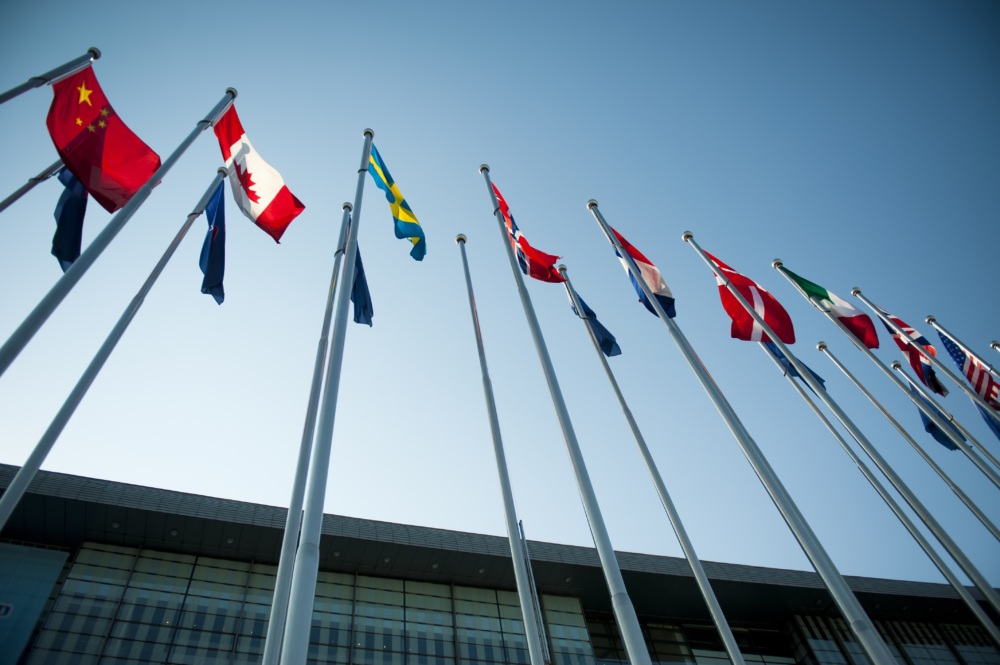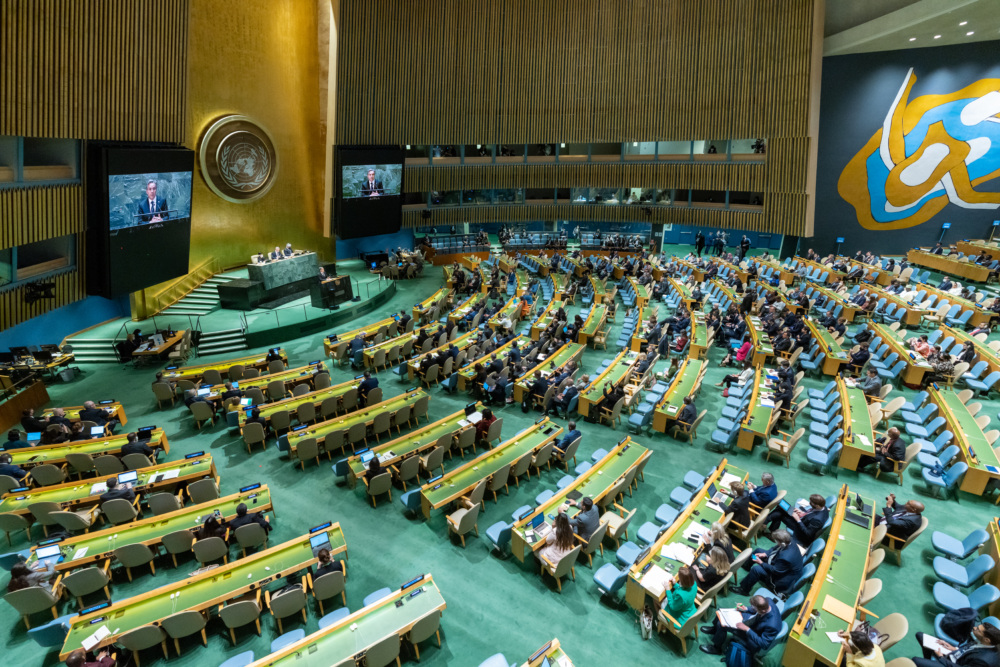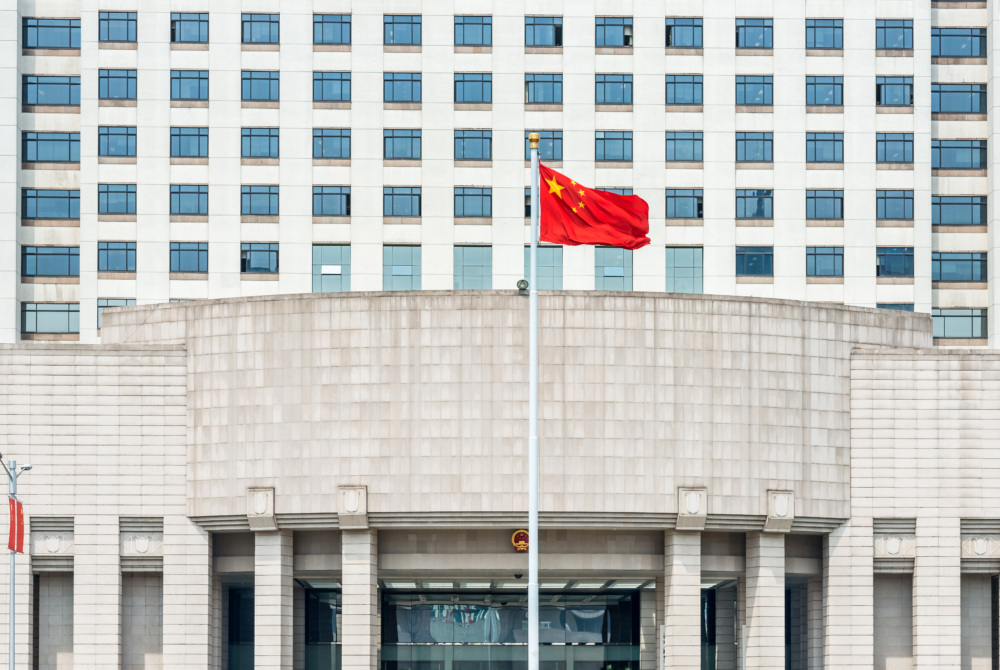
Atomic Pulse
The State of Disarmament: NPT Progress since 2015

This post was written by Caleb Yip, an intern with NTI’s Global Nuclear Policy Program from June-August 2021. Originally from Pittsburgh, he is currently a Master’s student at Georgetown University’s Security Studies Program, where he studies military operations and nuclear weapons.
When the long-delayed Tenth Nuclear Non-Proliferation Treaty (NPT) Review Conference (RevCon) convenes next year, it will do so at a time of increasing division between nuclear and non-nuclear weapon states and growing frustration about the pace of progress toward global disarmament. As leaders mark more than 50 years since the treaty entered into force in 1970, they will have to grapple with finding a way forward amid threats of new arms races and stalled efforts to prevent nuclear proliferation.
A half-century ago, the NPT struck a “grand bargain” whereby the five recognized Nuclear Weapon States (the United States, United Kingdom, France, Russia, and China—together known as the P5) agreed to work towards nuclear disarmament while requiring the Non-Nuclear Weapon States (NNWS) to refrain from pursuing nuclear weapons programs. Today, the political divide between NWS and NNWS appears to be growing. As countries prepare to gather for the next RevCon, it is worth exploring the status of disarmament efforts among NWS and what, if any, progress has been made since the last RevCon in 2015 in four key areas: nuclear testing, fissile materials, nuclear force reductions, and doctrine.
Nuclear Testing
Nuclear weapon states conducted hundreds of nuclear tests during the Cold War. Since the NWS signed the 1996 Comprehensive Nuclear-Test-Ban Treaty (CTBT), which banned all explosive nuclear tests, no NWS has conducted a nuclear test. However, the United States and China have not yet ratified the CTBT, and until it enters into force, unilateral testing moratoria are not legally binding. In 2018, the Trump administration said it would not seek ratification in the Senate, though President Biden supported CTBT as a senator and as vice president, and his administration may change this policy. Although all the NWS have expressed rhetorical support for the CTBT since the 2015 RevCon, China is believed to be reluctant to ratify until the United States does so and progress towards additional ratifications has stagnated. Until the treaty enters into force, the testing moratoria will remain voluntary.
Fissile Materials
Limiting the production of fissile material, the fuel for nuclear weapons, is another area where progress has stagnated. The proposed Fissile Material Cut-Off Treaty (FMCT) would prohibit the production of highly enriched uranium and plutonium, the building materials for nuclear weapons. As with the CTBT, all NWS have expressed rhetorical support for the FMCT and participated in a high-level expert preparatory group in 2017-2018. Despite their support, however, there has been little momentum to begin negotiations, partly due to opposition from non-recognized nuclear states like Pakistan. Additionally, since 2015, the Plutonium Management and Disposition Agreement (PMDA) between Russia and the United States has also broken down over disagreements about the United States’ approach and broader tensions in the bilateral relationship. The agreement originally envisioned turning U.S. excess bomb fuel into MOX fuel to be used in civilian reactors, but cost overruns led the United States to pursue an alternative approach of dilute-and-dispose. Russia claimed this approach was not consistent with the PMDA and suspended its participation, leaving the future of the agreement in doubt.
Nuclear Force Reductions
Of the four areas discussed here, nuclear force reductions have received the most scrutiny. Although an eventual world free of nuclear weapons was part of the NPT’s grand bargain, all five NWS have taken steps to modernize their arsenals since 2015. While the United States and Russia continue to be limited by the New START Treaty, they have not begun negotiations to further reduce nuclear weapons, and both are modernizing their arsenals. The United States is acquiring new Intercontinental Ballistic Missiles (ICBM), new low-yield warhead options, and perhaps nuclear cruise missiles. Russia also is developing new nuclear systems, including nuclear-capable hypersonic missiles, nuclear-powered torpedoes and cruise missiles, and a new heavy ICBM. Amid this build-up in weapons, arms control treaties between the world’s two biggest nuclear powers have suffered. Although Russia and the United States agreed to extend New START for five years, the United States withdrew from the Intermediate-Range Nuclear Forces (INF) Treaty in 2019, citing Russian violations. For decades, the INF Treaty banned an entire class of nuclear-capable systems that Russia is now reportedly deploying, with the United States potentially following suit in the future.
While China, the United Kingdom, and France all have traditionally maintained smaller nuclear arsenals, they too are modernizing. China is quickly expanding its nuclear capabilities to include road-mobile ICBMs and new ballistic missile submarines. Recently, researchers uncovered Chinese missile silo sites under construction that, if completed, could give China hundreds of new ICBM silos. Likewise, the United Kingdom, which had previously committed to limiting its warheads to 180, announced this year that it would raise its warhead ceiling to 260. France, though not expanding as rapidly as the other members of the P5, nevertheless has seen a steady increase in its nuclear budget and plans to upgrade its bombers in 2022 and design a new ballistic missile submarine.
Doctrine
Though progress is bleak elsewhere, some headway has been made on nuclear doctrine. During the Biden-Putin summit in 2021, the two presidents reaffirmed the Cold War-era Reagan-Gorbachev statement that a “nuclear war cannot be won and must never be fought,” and announced new strategic stability talks between the two countries. Two weeks later, Russia and China similarly concurred that “nuclear war has no winners and should never be unleashed” and agreed not to target each other with nuclear weapons or use nuclear weapons first against each other. Though only rhetorical, these reaffirmations are an important foundation that could lead to greater progress on reducing the risks of nuclear use.
Looking Ahead
Progress relating to disarmament in these four areas has been slow since the last RevCon and it has been a difficult review cycle. However, there is reason to hope: the reaffirmations of the Reagan-Gorbachev statement by the United States, Russia, and China were noteworthy; strategic stability talks between the United States and Russia are important to building trust, reducing tensions, and laying a foundation for future arms control measures; and progress on the FMCT negotiations or additional ratifications of the CTBT are possible, though difficult. When the world gathers for the next NPT RevCon, states will need to work creatively to find new solutions that can continue to advance the NPT’s goal of achieving a world without nuclear weapons.
Stay Informed
Sign up for our newsletter to get the latest on nuclear and biological threats.
More on Atomic Pulse

The 2023 NPT PrepCom: An Opportunity to Capitalize on Common Ground
As officials prepare to meet in Vienna for the 2023 PrepCom, they should consider some of the key themes that have emerged from NTI’s Global Enterprise to Strengthen Non-Proliferation and Disarmament.

China’s Nuclear Expansion and Implications for U.S. and Global Security
Amid uncertainty around China’s expanding nuclear program and silence from Beijing about the intent behind the build-up, a new report offers details about China’s nuclear program that suggest significant implications for U.S. and global security.

Reflections on My First Visit to Hiroshima
"Visiting Hiroshima imparted to me a deep sense of responsibility as well as a renewed energy to work towards a world without nuclear weapons," writes Program Officer Ananya Agustin Malhotra.
